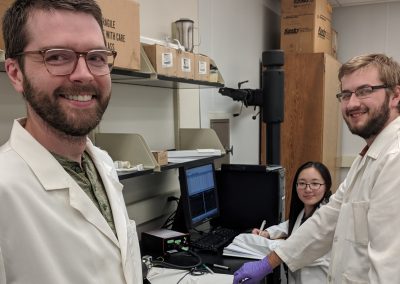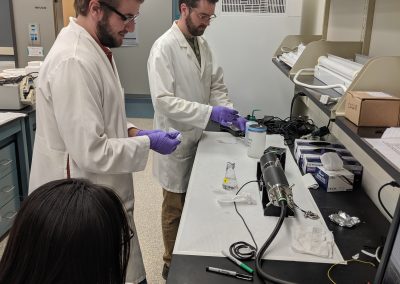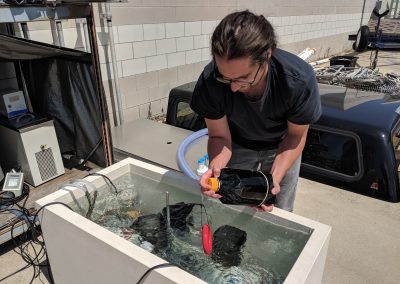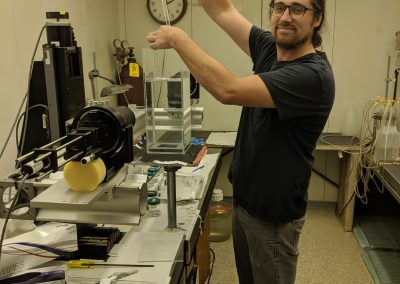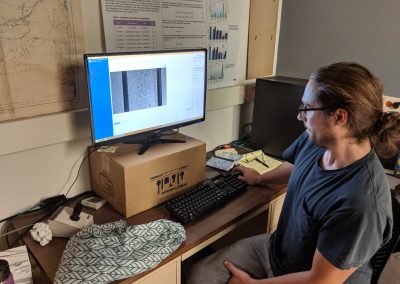Summer 2019 eNewsletter
CIGLR Spotlight
University of Michigan Master’s Students Work to Improve Harmful Algal Bloom Forecasts in Saginaw Bay, Lake Huron and Western Lake Erie
Harmful algal blooms (HABs) are on the rise across the globe, including in the Great Lakes. A warming climate plus large nutrient inputs from human activities on the land are implicated in the increased severity of HABs, particularly in the western basin of Lake Erie and Saginaw Bay of Lake Huron. Annually occurring blooms affect public health and various ecosystem services such as recreational activities. Controlling human exposure to microcystins, the most common toxin produced by the cyanobacterium Microcystis, is of particular concern for drinking water plants, which rely on the lakes for source water.
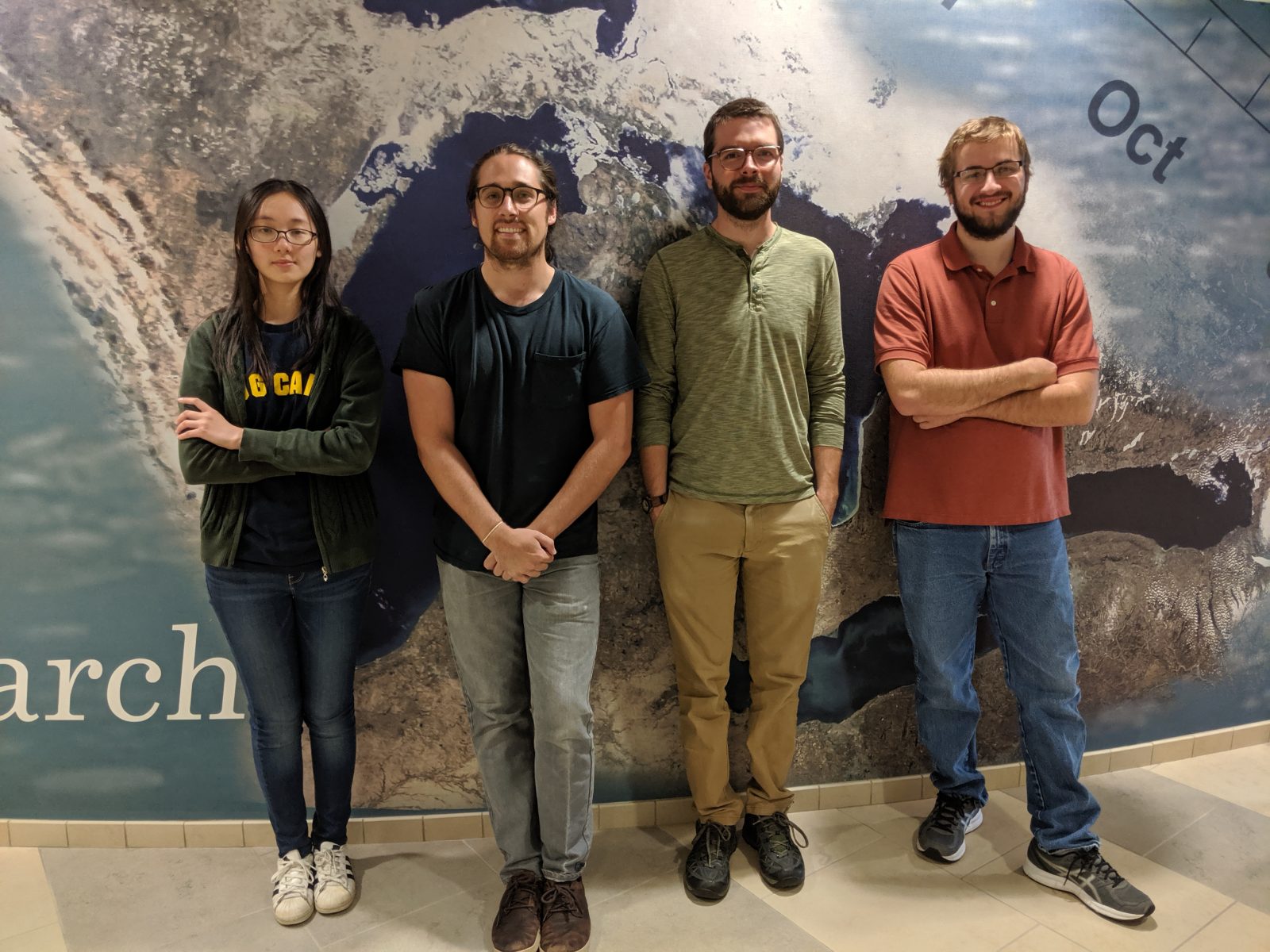
University of Michigan master’s students. (L-R) Hanqing Wu, Seamus Harrison, Charlie Ramsey, and Adam Oest.
Scientists at the University of Michigan’s Cooperative Institute for Great Lakes Research (CIGLR) and NOAA’s Great Lakes Environmental Research Laboratory (NOAA GLERL) have been monitoring HABs in western Lake Erie to generate real-time data, produce near-term forecasts, and provide data for a NOAA’s bi-weekly Lake Erie HAB Bulletin that reaches thousands of stakeholders across Michigan and Ohio each season. The progress made towards understanding, monitoring, and forecasting HABs in western Lake Erie has motivated the initiation of a similar program for Saginaw Bay, Lake Huron. However, it is unknown whether lessons from Lake Erie are relevant to Saginaw Bay as the ecological and social settings differ between the two systems.
This year, four University of Michigan master’s students from the School for Environment and Sustainability chose to focus on research questions that address important knowledge gaps between these two systems and their HABs problems. Seamus Harrison, Adam Oest, Charlie Ramsey and Hanqing Wu are working closely with advisors Drs. Casey Godwin and Thomas Johengen on Lake Erie and Saginaw Bay to 1) quantify the impact of nutrient availability on HABs development 2) determine the role of invasive mussels in worsening HABs 3) measure the migration (buoyancy) of harmful algae in response to ecological variables (e.g., light, nutrients) and 4) characterize public water system needs and attitudes related to HAB toxicity.
“Our team is studying western Lake Erie and Saginaw Bay in Lake Huron with hopes of increasing the accuracy of the HAB Tracker forecast tool and its usability within public water systems,” says Charlie Ramsey.
This project affords each student an opportunity for practical, hands-on experience. Students are responsible for aiding with sample collection aboard research vessels, executing laboratory experiments, measuring chemical and biological parameters of water samples, working with the western Lake Erie and Saginaw Bay public water systems to assess their needs, and facilitating engagement among researchers, public water systems, and the community. The summer research projects took place at NOAA GLERL, where students had the chance to interact with federal scientists and participate in CIGLR’s career-training program that equips them with the knowledge and skills to be the next generation of Great Lakes scientists.
“This experience has broadened our exposure to the research and monitoring that takes place in this region and has helped us to establish connections with researchers that work in this field,” says Charlie Ramsey.
Water from Lake Erie and Saginaw Bay was used in experiments to see how the algal community responds to mussel grazing. Pictured (L-R): Hanqing Wu, Adam Oest, and Charlie Ramsey.
Pictured (L-R): Charlie Ramsey, Adam Oest, and Hanqing Wu using a fluorometer to measure phytoplankton concentration and community composition.
Pictured (L-R): Charlie Ramsey, Adam Oest, and Hanqing Wu using a fluorometer to measure phytoplankton concentration and community composition.
Seamus Harrison performing sample incubations to see how light and nutrients affect size distribution and movement of Microcystis colonies.


